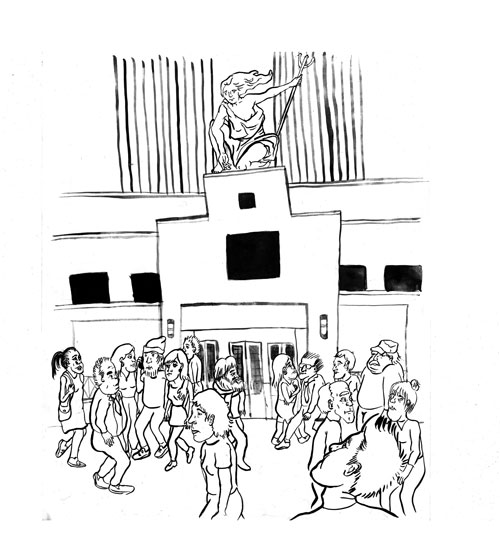Responses Takes

In this piece, Jake addresses “more than one way to read a town.” He points out the dangers of one-dimensional narratives, like the caricature of “Portlandia” or the condescending portrait in the pages of the New York Times. But he never denies that Portland has an ultimate identity that can be discovered and “understood.” His solution is to present a broad assortment of anecdotes, mostly from his childhood and his experiences as a local reporter. The narrative he tells is filled with the gritty and the weird, the radical and the reactionary.
Yet can a town ever really be “read”? Is narrativizing the best way for us to relate to place? Such an approach always runs into an inherent contradiction: the need to be at once encompassing and specific. As a Missourian transplant in New York City, I can sympathize with the frustration of having your hometown stereotyped. I’ve defended St. Louis against charges of provincialism and intolerance, while simultaneously clinging to my Midwestern-ness. Yet in making that part of my identity, I inevitably have to be somewhat reductive. I find myself pouring an entire region into a few adjectives, in order to hold it up against another region, similarly distilled: sensible, sincere vs. jaded, egotistical.
Arguably, an important difference between Portland and St. Louis is that the stereotypes about Portland tend to draw people in, while the stereotypes about St. Louis repel. The overarching hipster narrative is too narrow, but it has brought many Gen-Xers (and probably tourists) to town and has led to a growing coffee industry. Have the town’s economy and welfare perhaps been helped by it? In St. Louis, there are two conflicting narratives: “flyover country,” with nothing worth seeing, and “the most dangerous city in America,” as infamously labeled in a 2010 national study. Neither of these stories is particularly flattering, and the city is suffering. The public schools have lost their accreditation; few people live in the inner city.
The situation of St. Louis is not unlike that of Detroit, another Midwestern city that has lost control of its narrative. The Chrysler Super Bowl commercial featuring Eminem, which struck such a chord last year, self-consciously took on the challenge of city re-branding. The ad nodded at Detroit stereotypes and transcended them, moving beyond the story “being written by folks who’ve never even been here” (if only in a two-minute sound bite). Remaking Detroit’s image in this way was both philosophically and financially motivated: the poetry is embedded within a Chrysler marketing strategy. We come away from it not only with a more positive view of the Motor City but also with the desire to support it by buying a new car.
Are narratives, with their inevitable constraints, permissible in this sort of context, when the stereotypes help a city recover? Or are they always too narrow, too inadequate? There is a condition, documented among Japanese tourists, called “Paris Syndrome,” characterized by psychosomatic symptoms caused by disillusionment with the City of Light. Paris is so romanticized in culture that the real place can never live up to the story. The narratives told about places like Paris (and Portland) are so much a part of our consciousness that it is nearly impossible to view them without that lens. Is attempting to counter such incomplete narratives with slightly-less-incomplete ones the best way to engage with the places in which we live? If not, how can we better structure that relationship?